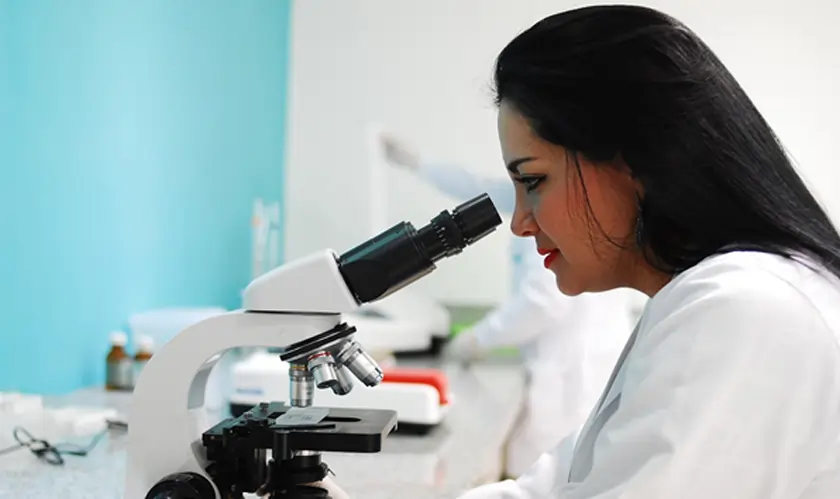Home Industry Biotech The Science Behind Regenerativ...
Biotech

CIO Bulletin
27 January, 2025
Regenerative therapy represents a revolutionary approach in medicine, offering hope for repairing, regenerating, and restoring damaged tissues and organs. This cutting-edge field focuses on harnessing the body’s natural healing abilities to treat injuries and chronic conditions, paving the way for treatments that go beyond managing symptoms to actually addressing the root cause of disease.
By leveraging advancements in stem cell research, tissue engineering, and molecular biology, regenerative therapy continues to reshape the landscape of modern medicine. Here’s an in-depth look at how regenerative therapy works and the science behind its transformative potential.
Stem cells are at the heart of regenerative therapy. These unique cells have the remarkable ability to differentiate into various types of cells, such as muscle, bone, cartilage, or nerve cells, depending on the body’s needs. Unlike specialized cells, stem cells can replicate themselves, making them an invaluable resource for healing and regeneration. When it comes to stem cell therapy, researchers focus on using these cells to repair or replace damaged tissues. For instance, in cases of joint injuries, stem cells can be introduced into the affected area to stimulate cartilage regeneration. Similarly, in neurological conditions, they may help restore damaged nerve pathways by transforming them into healthy neurons.
This type of therapy typically involves extracting cells from the patient’s own body—often from bone marrow or adipose tissue—to reduce the risk of rejection. These cells are then processed and reintroduced into the body to promote natural healing. The versatility and adaptability of stem cells make them a cornerstone of regenerative medicine.
Tissue engineering is another pillar of regenerative therapy. This interdisciplinary field combines cells, biomaterials, and biochemical factors to create structures that can repair or replace damaged tissues. Unlike traditional transplants, tissue engineering seeks to grow functional tissues in the lab, offering a sustainable and customizable solution for organ and tissue repair.
For example, in the case of severe burns, engineered skin grafts can provide patients with new, functional skin grown from their own cells. Similarly, advances in bio-printing—a technology that uses 3D printers to create tissue scaffolds—allow for precise replication of complex organs like the liver or heart.
The ability to generate tissue tailored to the patient’s unique biology not only enhances compatibility but also minimizes the ethical concerns associated with traditional organ donation. Tissue engineering has the potential to revolutionize treatments for organ failure, trauma, and degenerative diseases.
At its core, regenerative therapy relies on the interplay of cellular mechanisms and biochemical signaling to stimulate healing. When the body sustains damage, it naturally initiates a repair process, recruiting cells and growth factors to the affected area. However, in cases of severe injury or chronic disease, this process may be insufficient.
Regenerative therapy works by amplifying the body’s natural healing mechanisms. Stem cells and growth factors are introduced to the damaged area, where they release signaling molecules that attract additional cells and stimulate tissue repair. This process not only promotes regeneration but also reduces inflammation, creating an environment conducive to healing.
In conditions like osteoarthritis, regenerative therapy helps rebuild cartilage while alleviating pain and inflammation. Similarly, stem cell treatments can aid in repairing damaged heart tissue and improving overall function in cardiovascular diseases. By addressing the underlying damage rather than masking symptoms, regenerative therapy offers a more sustainable approach to treatment.
The clinical applications of regenerative therapy span a wide range of medical disciplines, from orthopedics to neurology. One of the most common uses is in sports medicine, where athletes benefit from treatments that accelerate recovery and reduce downtime. Tendon and ligament injuries, for instance, respond well to regenerative therapies, allowing athletes to return to peak performance more quickly.
In the field of neurology, regenerative therapy holds promise for conditions like multiple sclerosis, Parkinson’s disease, and spinal cord injuries. Early research shows that stem cells can potentially restore damaged nerve cells, offering hope for patients with previously untreatable conditions.
Cardiovascular health is another area where regenerative therapy has shown great potential. For individuals who have experienced heart attacks, stem cell treatments aim to repair damaged cardiac tissue, improving heart function and reducing the risk of future complications.
These success stories underscore the transformative impact of regenerative therapy, providing solutions that were once considered impossible.

Regenerative therapy represents a paradigm shift in medicine, offering the potential to heal, repair, and even reverse damage caused by injuries and chronic conditions. While challenges remain, the ongoing advancements in regenerative science inspire optimism. By harnessing the body’s innate healing abilities, regenerative therapy not only addresses the root causes of disease but also provides a path toward improved health and well-being. With continued innovation, this field promises to unlock new possibilities and redefine what’s possible in medical treatment.







